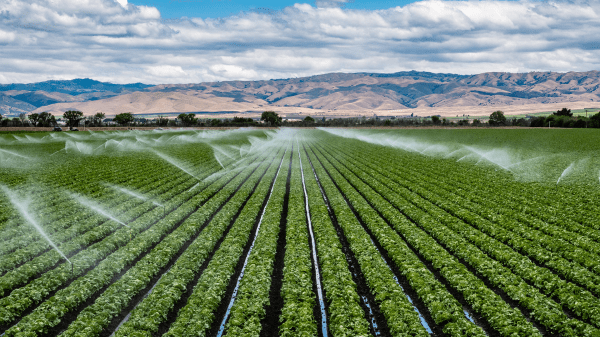The New York Times has run some features this week on groundwater depletion in the United States.
Their central message is undeniable. There is acute groundwater depletion in certain regions: the Central Valley and Salinas Valley in California, large stretches of Utah and Idaho, central Arizona, the western Great Plains, eastern Arkansas, northwestern Mississippi, northeastern Virginia, much of Maryland, and New York’s Long Island.

Examining results from 84,544 wells since 1920 nationwide, the article says, “Nearly half the sites have declined significantly during the past 40 years as more water has been pumped out than nature can replenish.”
Agriculture is responsible for much of this depletion, the stories say.
Nevertheless, the article’s interactive map showed rising levels of groundwater in eastern sections of Nebraska, South Dakota, and North Dakota (and puzzlingly, as of 2022, even central Arizona).
The problem is made worse by groundwater subsidence, leaving less room underground for water to percolate down from the surface.
Climate change is also blamed. Higher temperatures mean more evaporation on the surface, shrinking snowpacks, and heavier rainstorms, much of whose water runs out to the ocean, as Californians observed to their chagrin during the deluge of this previous winter.
The moral is a discouraging one: it is time to act now, but the effects of acting now may not be felt for decades.
Take California’s State Groundwater Management Program (SGMA, pronounced sigma), launched in 2014 in an attempt to stave off groundwater depletion. The program’s effects are not expected to be fully felt until 2040.
SGMA is expected to take—if it has not already taken—hundreds of thousands of the state’s acreage out of production. The wild variations in estimates (which also span hundreds of thousands of acres) suggests that no one knows exactly how much.
Signing the legislation, then-Governor Jerry Brown stressed that “groundwater management in California is best accomplished locally.” Accordingly, groundwater sustainability areas (GSAs) were delineated, each of which is supposed to draw up its own groundwater sustainability plan (GSP).
Unfortunately, the GSAs haven’t done too well with the GSPs. Many plans were deemed incomplete or inadequate, forcing the State Water Project to intervene and draw up plans of its own.
But the GSAs’ fault may be forgivable, given the complexity of the issue and the vagueness of the criteria. “Every GSA had to come up with its own method of determining sustainable yield,” which, Caitlin Peterson, associate director and research fellow for the nonpartisan Water Policy Center of the Public Policy Institute of California observes, “is notoriously difficult to quantify.”
To conserve water, much of California’s farm acreage has switched from flood irrigation to precision irrigation, with drip tubing and nozzles.
Precision irrigation could be assumed to be a good thing, since it uses less water (often by a margin of several acre-feet per acre). Not entirely, because the less water applied to crops, the less percolates underground. With flood irrigation, much more “loose water used to go down; maybe 20 percent of it got into the water table,” says John Pandol, special projects director of Pandol Bros., Inc. BB #:111977, based in Delano, CA.
California’s Salinas Valley faces a problem in addition to depletion, since its proximity to the Pacific leaves it liable to saltwater intrusion.
Solutions seem obvious but harsh. The western Great Plains may have to go back to dryland farming (if that is not already happening). Since, as the Times point out, “many of the country’s fastest-growing communities are in places with limited rainfall, like Arizona, Texas, and Utah, and other areas across the southwest,” people should stop moving to those areas. (But who is going to stop them?)
In any case, the great agricultural valleys of California—the heart of the nation’s fruit and vegetable production—are too special and too precious to toss aside. Much will depend on the adequacy of SGMA.



